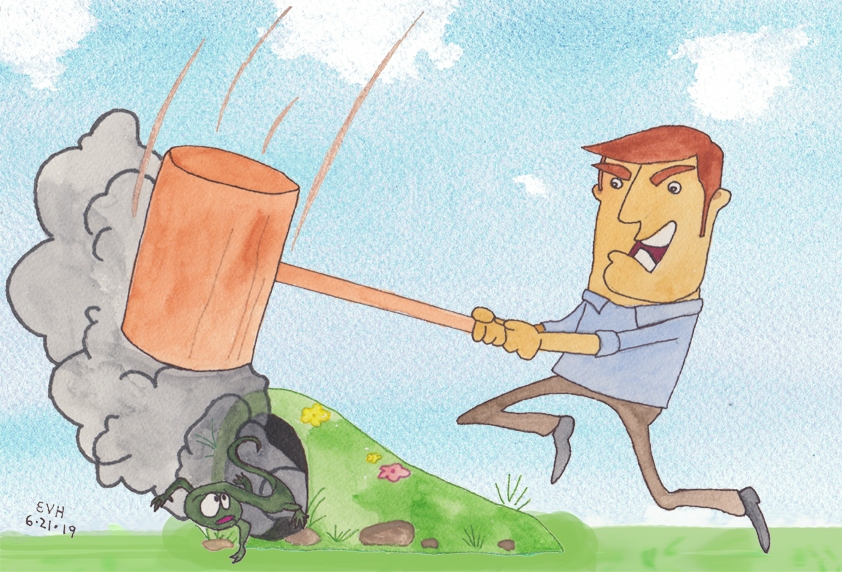
Jataka 141
Godha Jātaka
The Iguana
as told by Eric Van Horn
originally translated by Robert Chalmers, B.A., of Oriel College, Oxford University
originally edited by Professor Edward Byles Cowell, Cambridge University
In this story the bad guy is a chameleon. This may be for some reason lost to ancient Indian tradition. Not surprisingly we find out at the end of the story that the chameleon is none other than Devadatta!
“Bad company.” This story was told by the Master while he was at the Bamboo Grove. It is about a traitorous monk. The introductory incident is the same as that told in the Mahilāmukha Jātaka (Jātaka 26: The Elephant Damsel-face).
Once upon a time when Brahmadatta was reigning in Benares, the Bodhisatta was born as an iguana. When he grew up he lived in a big burrow in the river bank with a following of many hundreds of other iguanas.
Now the Bodhisatta had a son, a young iguana, who was great friends with a chameleon, whom he used to hug and embrace. This intimacy was reported to the iguana king. He sent for his young son and said that such friendship was misplaced, for chameleons were low creatures, and that if he continued to be intimate with the chameleon, disaster would come to the whole tribe of iguanas. He ordered his son to end his relationship with the chameleon.
But the son continued in his intimacy. Again and again the Bodhisatta spoke with his son, but his words were of no avail. Foreseeing danger to the iguanas from the chameleon, he had a tunnel cut on one side of their burrow so that there might be a means of escape if necessary.
Now as time went on, the young iguana grew to a great size while the chameleon never grew any bigger. And as these mountainous embraces of the young giant grew painful indeed, the chameleon saw that they would be the death of him if they went on even a few days longer. So he conspired with a hunter to destroy the whole tribe of iguanas.
One day in the summer the ants came out after a thunderstorm, and the iguanas darted here and there catching them and eating them. Now an iguana trapper came into the forest. He had a shovel and dogs to dig out iguanas. The chameleon thought what a haul he would put in the trapper’s way. So he went up to the man, and, lying down before him, asked why he was in the forest.
“To catch iguanas,” was the reply.
“Well, I know where there’s a burrow of hundreds of them,” the chameleon said. “Bring firewood and brushwood and follow me.”
And he led the trapper to where the iguanas lived.
“Now,” the chameleon said, “put your fuel in there and smoke the iguanas out. Meantime let your dogs stand guard and take a big stick in your hand. Then as the iguanas run out, strike them down and make a pile of the slain.”
So saying, the treacherous chameleon went off to a spot nearby where he lay down with his head up, saying to himself, “Today I shall see the rout of my enemy.”
The trapper set to work to smoke the iguanas out. Inside the burrow the iguanas feared for their lives. They ran helter-skelter from their burrow. As they came out, the trapper knocked them on the head, and if he missed them, they fell prey to his dogs. And so there was great slaughter among the iguanas.

Figure: Smoked Out
Realizing that this was the chameleon’s doing, the Bodhisatta cried, “One should never make friends with the wicked, for such bring disaster in their wake. A single wicked chameleon has proven to be the bane of all these iguanas.” So saying, he escaped by the tunnel he had provided, uttering this stanza:
Bad company can never end in good.
Through friendship with one sole chameleon
The tribe of iguanas met their end.
His lesson ended, the Master identified the birth by saying, “Devadatta was the chameleon of those days. This traitorous monk was the disobedient young iguana, the son of the Bodhisatta, and I myself was the king of the iguanas.”
